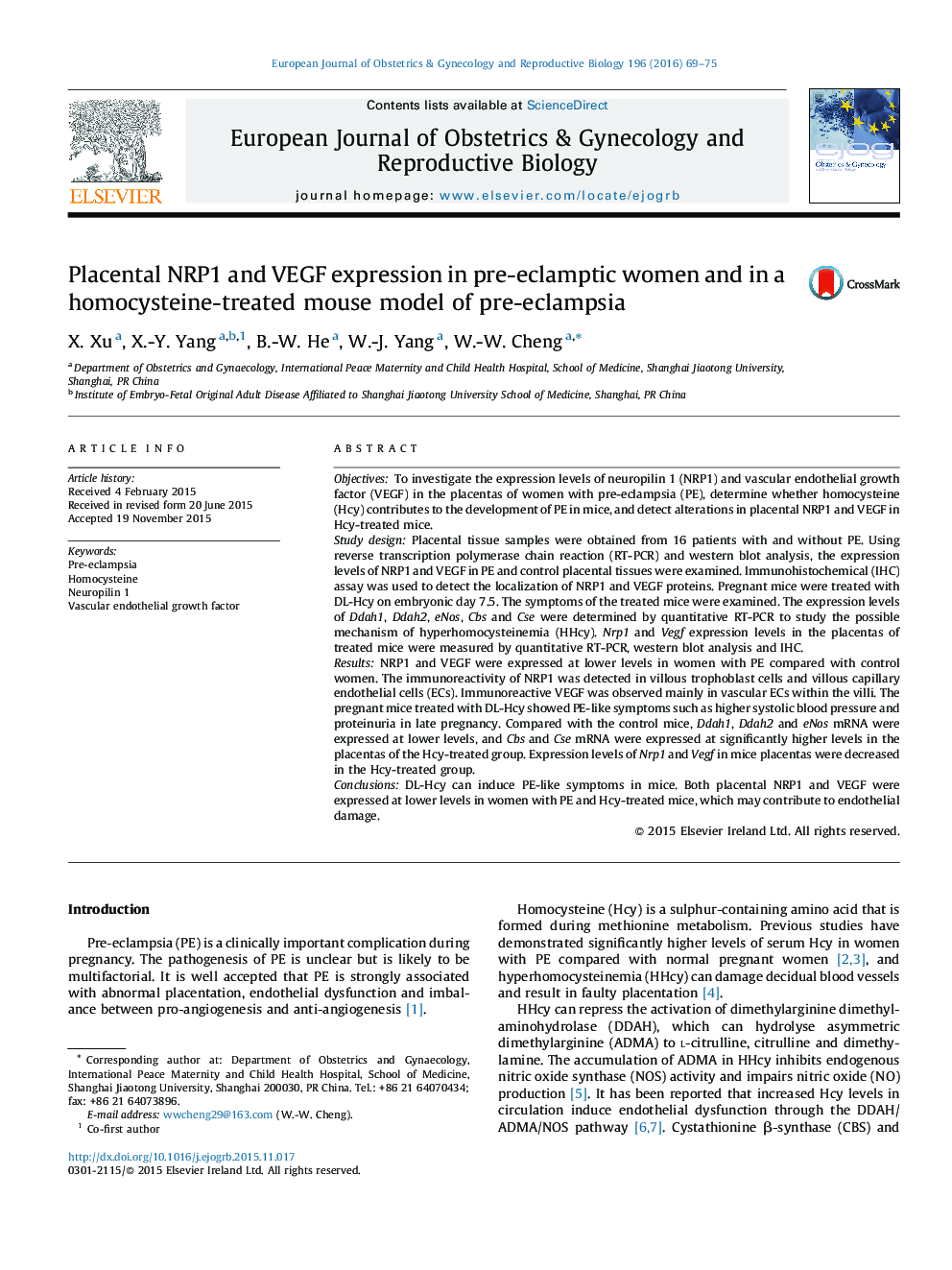| Article ID | Journal | Published Year | Pages | File Type |
|---|---|---|---|---|
| 3919425 | European Journal of Obstetrics & Gynecology and Reproductive Biology | 2016 | 7 Pages |
ObjectivesTo investigate the expression levels of neuropilin 1 (NRP1) and vascular endothelial growth factor (VEGF) in the placentas of women with pre-eclampsia (PE), determine whether homocysteine (Hcy) contributes to the development of PE in mice, and detect alterations in placental NRP1 and VEGF in Hcy-treated mice.Study designPlacental tissue samples were obtained from 16 patients with and without PE. Using reverse transcription polymerase chain reaction (RT-PCR) and western blot analysis, the expression levels of NRP1 and VEGF in PE and control placental tissues were examined. Immunohistochemical (IHC) assay was used to detect the localization of NRP1 and VEGF proteins. Pregnant mice were treated with DL-Hcy on embryonic day 7.5. The symptoms of the treated mice were examined. The expression levels of Ddah1, Ddah2, eNos, Cbs and Cse were determined by quantitative RT-PCR to study the possible mechanism of hyperhomocysteinemia (HHcy). Nrp1 and Vegf expression levels in the placentas of treated mice were measured by quantitative RT-PCR, western blot analysis and IHC.ResultsNRP1 and VEGF were expressed at lower levels in women with PE compared with control women. The immunoreactivity of NRP1 was detected in villous trophoblast cells and villous capillary endothelial cells (ECs). Immunoreactive VEGF was observed mainly in vascular ECs within the villi. The pregnant mice treated with DL-Hcy showed PE-like symptoms such as higher systolic blood pressure and proteinuria in late pregnancy. Compared with the control mice, Ddah1, Ddah2 and eNos mRNA were expressed at lower levels, and Cbs and Cse mRNA were expressed at significantly higher levels in the placentas of the Hcy-treated group. Expression levels of Nrp1 and Vegf in mice placentas were decreased in the Hcy-treated group.ConclusionsDL-Hcy can induce PE-like symptoms in mice. Both placental NRP1 and VEGF were expressed at lower levels in women with PE and Hcy-treated mice, which may contribute to endothelial damage.
